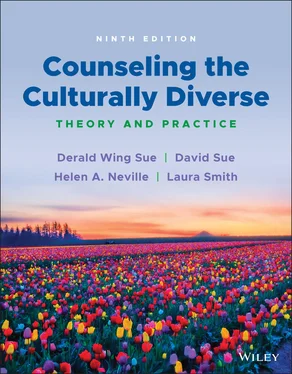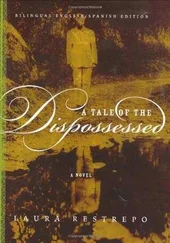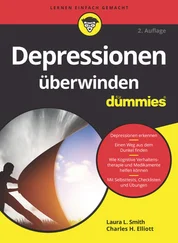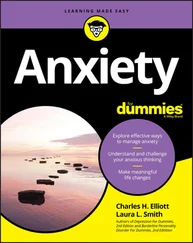Clients trust mental health professionals to take an intimate and deeply personal journey of self‐ exploration with them through the process of therapy. They grant these professionals the opportunity to look into their inner world and invite them to walk with them in their everyday lives. Therapists and counselors have an obligation to their clients, especially when their clients differ from them in terms of race, gender, ability, religion, or sexual orientation, to work to understand their experiential reality. Research suggests that when therapist and client are able to successfully discuss microaggressions, the therapeutic alliance can be restored. Therefore, therapists must be open to the idea that they can commit microaggressions against their clients and be willing to examine their role in this process.
Therapists and counselors are in a position to learn from their clients about microaggressions and their relationship to their presenting concerns and developmental issues. It is imperative to encourage clients to explore their feelings about incidents that involve their race, gender, and sexual orientation so that the status quo of silence and invisibility can be destroyed. Equally important is for counselors to familiarize themselves with the literature on microinterventions. One of the most promising avenues of proactive therapy for culturally diverse clients is to arm them with a repertoire of anti‐bias strategies, to provide them with a sense of control, and to enhance psychological well‐being.
Full Counseling Session Analysis video (Part II) for “ Microaggressions in Counseling ”
Ableism
Aversive racism
Covert sexism
Heterosexism
Homonegativity
Microaggression
Microassault
Microinsult
Microinvalidation
Microinterventions
Overt sexism
Racism
Religious discrimination
Subtle sexism
Transphobia
1 American Psychological Association. (2016). Stress in America: The impact of discrimination. Washington, DC: American Psychological Association.
2 Asian American Psychological Association . (2021, March 18). Written testimony from the Asian American Psychological Association. Before the United States House of Representative. Hearing on Discrimination and Violence Against Asian Americans.
3 Auguste, E. E., Cruise, K. R., & Jimenez, M. C. (2021). The effects of microaggressions on depression in young adults of color: Investigating the impact of traumatic event exposures and trauma reaction. Journal of Traumatic Stress, 0, 1–10.
4 Becker, J. C., & Swim, J. K. (2012). Reducing endorsement of benevolent and modern sexist beliefs: Differential effects of addressing harm versus pervasiveness of benevolent sexism. Social Psychology, 43, 127–137.
5 Bell, L. A. (2003). Telling tales: What stories can teach us about racism. Race, Ethnicity and Education. 6, 3–28.
6 Blume, A. W., Lovato, L. V., Thyken, B. N., & Denny, N. (2012). The relationship of microaggressions with alcohol use and anxiety among ethnic minority college students in a historically White institution. Cultural Diversity and Ethnic Minority Psychology, 18, 45–54.
7 Bostwick, W., & Hequembourg, A. (2014). “Just a little hint”: Bisexual‐specific microaggressions and their connection to epistemic injustices. Culture, Health and Sexuality, 16, 488–503.
8 Bryant‐Davis, T. (2018). Microaggressions: Considering the framework of psychological trauma. In G. C. Torino, D. P. Rivera, C. M. Capodilupo, K. L. Nadal, & D. W. Sue (Eds.), Microaggression theory: Influence and implication. Hoboken, NJ: Wiley.
9 Burn, S. M., Kadlec, K., & Rexer, B. S. (2005). Effects of subtle heterosexism on gays, lesbians, and bisexuals. Journal of Homosexuality, 49, 23–38.
10 Burns, C., & Krehely, J. (2011). Gay and transgender people face high rates of workplace discrimination and harassment. Retrieved from https://www.americanprogress.org/issues/lgbt/news/2011/06/02/9872/gay‐and‐transgender‐people‐face‐high‐rates‐of‐workplace‐discrimination‐and‐harassment/
11 Calogero, R. M., & Tylka, T. L. (2014). Sanctioning resistance to sexual objectification: An integrative system justification perspective. Journal of Social Issues, 70, 763–778.
12 Cundiff, J. L., Zawadzki, M. J., Danube, C. L., & Shields, S. A. (2014). Using experiential learning to increase the recognition of everyday sexism as harmful: The WAGES intervention. Journal of Social Issues, 70, 703–721.
13 Dovidio, J. F., & Gaertner, S. L. (2000). Aversive racism and selective decisions: 1989–1999. Psychological Science, 11, 315–319.
14 Dovidio, J. F., Gaertner, S. L., & Pearson, A. R. (2017). Aversive racism and contemporary bias. In F. K. Barlow, & C. G. Sibley (Eds.), The Cambridge handbook of the psychology of prejudice (pp. 267–294). Cambridge: Cambridge University Press.
15 Gaertner, S. L., & Dovidio, J. F. (2006). Understanding and addressing contemporary racism: From aversive racism to the common ingroup. Journal of Social Issues, 61, 615–639.
16 Gallup Poll . (2020, July 15). Black adults disproportionately experience microaggressions.
17 Harper, S. R. (2013). Am I my brother's teacher? Black undergraduates, racial socialization, and peer pedagogies in predominately white postsecondary contexts. Review of Research in Education, 37, 183–211.
18 Hill, D. B., & Willoughby, B. L. B. (2005). The development and validation of the genderism and transphobia scale. Sex Roles, 53, 531–544.
19 Hook, J. N., Farrell, J. E., Davis, D. E., DeBlaere, C., Van Tongeren, D. R., & Utsey, S. O. (2016). Cultural humility and racial microaggressions in counseling. Journal of Counseling Psychology, 63(3), 269–277.
20 Huber, L. P., & Cueva, B. M. (2012). Chicana/Latina testimonials on effects and responses to microaggressions. Equity & Excellence in Education, 45(3), 392–410.
21 Huber, L. P., & Solorzano, D. G. (2015). Racial microaggressions as a tool for critical race research. Race, Ethnicity, and Education, 18(3), 297–320.
22 Jones, M. L., & Galliher, R. V. (2014). Daily microaggressions and ethnic identification among Native American young adults. Cultural Diversity and Ethnic Minority Psychology, 21, 1–9.
23 Keller, R. M., & Galgay, C. E. (2010). Microaggressive experience of people with disabilities. In D. W. Sue (Ed.), Microaggressions and marginality (pp. 241–267). Hoboken, NJ: Wiley.
24 Martin, J. L. (2019). Factors contributing to microaggressions, racial battle fatigue, stereotype threat, and imposter phenomenon for nonhegemonic students: Implications for urban education. In G. C. Torino, D. P. Rivera, C. M. Capodilupo, K. L. Nadal, & D. W. Sue (Eds.). Microaggression Theory: Influence and implications (pp. 309–328). Hoboken, N. J.: John Wiley & Sons.
25 Marzullo, M. A., & Libman, A. J. (2009). Research overview: Hate crimes and violence against lesbian, gay, bisexual and transgender people. Report for the Human Rights Campaign Foundation. Retrieved from http://www.hrc.org/resources/entry/hate‐crimes‐and‐violence‐against‐lgbt‐people
26 Morrison, M. A., & Morrison, T. G. (2002). Development and validation of a scale measuring prejudice toward gay men and lesbian women. Journal of Homosexuality, 43, 15–37.
27 Muran, J. C., Eubanks, C. F., & Samstag, L. W. (2020). One more time with less jargon: An introduction to “Rupture Repair in Practice.” Journal of Clinical Psychology. 2021, 1–8.
28 Nadal, K. L. (2013). That's so gay! Microaggressions and the lesbian, gay, bisexual, and transgender community. Washington, DC: American Psychological Association.
29 Nadal, K. L., Griffin, K. E., Wong, Y., Davidoff, K. C., & Davis, L. S. (2017). The injurious relationship between racial microaggressions and physical health: Implications for social work. Journal of Ethnic & Cultural Diversity in Social Work: Innovation in Theory, Research & Practice, 26, 6–17.
Читать дальше












